REDUCE—A Tool Supporting Inconsistencies Reduction in the Decision-Making Process
Abstract
1. Introduction
2. Overall Structure and Features of the Application
2.1. Analysis of the Application Structure
- Front-end layer (HTML + CSS + JS) responsible for the appearance and handling of the application, as well as input data validation, including the intermediary layer (AJAX) ensuring communication between the front end and back end, “integrated” with the front end;
- Back-end layer (Flask + Python libraries) handles server-side computations and transfers the results to the front-end layer;
- Server and administrative solutions (Ubuntu Server, NGINX, Gunicorn, Certbot).
2.1.1. Front-End Layer
2.1.2. Back-End Layer
- main(): renders the main page of the application;
- if name == “main”: app.run: runs the application when the file is executed as the main script.
2.1.3. Server and Administrative Solutions
- Malware infections;
- Denial of service (DoS);
- Distributed denial of service (DDoS);
- Ransomware attacks;
- SQL Injection;
- Cross-site scripting.
2.1.4. Comparison of Inconsistency Reduction Algorithms in REDUCE
2.2. Compatibility, Security, and Performance Testing of Application
2.2.1. Compatibility Testing on Various Devices and Platforms
2.2.2. Security and Firewall Testing
2.2.3. Performance Testing of Application Loading
Validation of the Application Compliance with Current Standards
3. Paths for Further Development and Commercialization of the Software
- Fixing known bugs and improving performance—identification, analysis, and correction issues within the software that affect its functionality, performance, or stability;
- Adding new features and refining existing ones;
- Enhancing data security to protect user privacy—implementation and update of security measures to safeguard user data against unauthorized access, breaches, or misuse, update of encryption protocols, secure authentication methods, and regularly auditing access controls;
- Updating documentation and technical support—to ensure that they reflect the latest features, configuration settings, troubleshooting procedures, latest FAQs, live chat, or helpdesk services, addressing customer queries, and training sessions.
4. Conclusions
- User-friendly interface;
- Application of at least two methods for inconsistency reduction;
- System available online via webpage;
- Visual presentation of processed data and obtained results;
- The use of developer’s tools based on: Flask, Apache, Python, NumPy, SciPy, SymPy, and jQuery;
- Safe and secure server system.
Author Contributions
Funding
Institutional Review Board Statement
Informed Consent Statement
Data Availability Statement
Conflicts of Interest
References
- Saaty, T.L. Decision making with the analytic hierarchy process. Int. J. Serv. Sci. 2008, 1, 83–98. [Google Scholar] [CrossRef]
- Dyer, J. A review of multi-criteria decision-making techniques. Eur. J. Oper. Res. 2001, 130, 440–449. [Google Scholar]
- Xu, L.D. Information architecture for supply chain quality management. Int. J. Prod. Res. 2011, 49, 183–198. [Google Scholar] [CrossRef]
- Saaty, T.L.; Vargas, L.G. Models, Methods, Concepts & Applications of the Analytic Hierarchy Process; Springer: Berlin/Heidelberg, Germany, 2012. [Google Scholar]
- Thurstone, L.L. A law of comparative judgment. Psychol. Rev. 1927, 34, 273–286. [Google Scholar] [CrossRef]
- Lee, S.; Li, D. TTCM: A Tensor-Based Technique for Classifying Multi-Aspect Data. IEEE Trans. Pattern Anal. Mach. Intell. 2019, 41. [Google Scholar]
- Abedin, M.M.T.; Rahman, M.M. Decision Support System for Product Customization in E-Commerce. IEEE Access 2019, 7, 140522–140531. [Google Scholar]
- Burges, C.J.C.; Shaked, T.; Renshaw, E.; Lazier, A.; Deeds, M.; Hamilton, N.; Hullender, G. Learning to rank using gradient descent. In Proceedings of the 22nd International Conference on Machine Learning (ICML), Bonn, Germany, 7–11 August 2005; pp. 89–96. [Google Scholar]
- Al-Ameen, M.; Lee, S.Y.; Neoh, A.Y.L. A hybrid finite state machine and data mining approach for multi-agent plan recognition. Pattern Recognit. 2014, 47, 1291–1301. [Google Scholar]
- Ning, X.; Karypis, G. SLIM: Sparse linear methods for top-N recommender systems. In Proceedings of the 11th IEEE International Conference on Data Mining (ICDM), Vancouver, BC, Canada, 11–14 December 2011; pp. 497–506. [Google Scholar]
- Tukey, J.W. The Problem of Multiple Comparisons; Academic Press: Cambridge, MA, USA, 1953. [Google Scholar]
- Kim, G.; Hwang, C. Flexible modification of the Bonferroni method for multiple tests. IEEE Trans. Neural Netw. Learn. Syst. 2020, 31. [Google Scholar]
- Fisher, R.A. The Design of Experiments; Oliver & Boyd: Edinburgh, UK, 1935. [Google Scholar]
- Benjamini, Y.; Hochberg, Y. Controlling the false discovery rate: A practical and powerful approach to multiple testing. J. R. Stat. Soc. Ser. B (Methodol.) 1995, 57, 289–300. [Google Scholar] [CrossRef]
- Elo, A.E. The Rating of Chess Players, Past and Present; Ishi Press: London, UK, 1978. [Google Scholar]
- Schaefer, M.W. Sports Ratings and Rankings; Springer: Berlin/Heidelberg, Germany, 2008. [Google Scholar]
- FIFA. Revision of the FIFA/Coca-Cola World Ranking. Available online: https://img.fifa.com/image/upload/edbm045h0udbwkqew35a.pdf (accessed on 29 October 2024).
- Deb, K. Multi-Objective Optimization Using Evolutionary Algorithms; John Wiley & Sons: Hoboken, NJ, USA, 2001. [Google Scholar]
- Xu, F.; Zhang, J.A.; Chen, Y.J. Pairwise comparison matrix reduction for large-scale decision making: A graph-based approach. IEEE Trans. Syst. Man, Cybern. Syst. 2021, 51, 5768–5778. [Google Scholar]
- Horton, J.J.; Chilton, L.B. The labor economics of paid crowdsourcing. In Proceedings of the 11th ACM Conference on Electronic Commerce (EC), Cambridge, MA, USA, 7–11 June 2010; pp. 209–218. [Google Scholar]
- Lieberman, M.D.; Sorensen, J.T.; Goodenough, J.D. Crowdsourced pairwise comparisons of social relationships. IEEE Trans. Vis. Comput. Graph. 2020, 26, 296–305. [Google Scholar]
- Hooker, J.N.; Hajiaghayi, M.G. Principles of distributed decision making. IEEE Trans. Syst. Man, Cybern. Syst. 2021, 51, 4140–4151. [Google Scholar]
- Brafman, R.I.; Domshlak, C. Preference handling—An introductory tutorial. AI Mag. 2009, 30, 58–69. [Google Scholar] [CrossRef]
- Pearl, J. Probabilistic Reasoning in Intelligent Systems: Networks of Plausible Inference; Morgan Kaufmann: San Francisco, CA, USA, 1988. [Google Scholar]
- Smith, A.C.; Emmenegger, J.P. Preference learning from pairwise comparisons: A survey. IEEE Trans. Knowl. Data Eng. 2004, 31, 1106–1120. [Google Scholar]
- Tversky, A.; Kahneman, D. Judgment under uncertainty: Heuristics and biases. Science 1974, 185, 1124–1131. [Google Scholar] [CrossRef]
- Kahneman, D. Thinking, Fast and Slow; Farrar, Straus and Giroux: New York, NY, USA, 2011. [Google Scholar]
- Kulakowski, K. On the Properties of the Priority Deriving Procedure in the Pairwise Comparisons Method. Fundam. Informaticae 2015, 139, 403–419. [Google Scholar] [CrossRef]
- Mazurek, J.; Perzina, R.; Strzałka, D.; Rajs, R. Is the best–worst method path dependent? Evidence from an empirical study. 4OR 2023, 22, 387–409. [Google Scholar] [CrossRef]
- Saaty, T.L. How to make a decision: The analytic hierarchy process. Interfaces 1994, 24, 19–43. [Google Scholar] [CrossRef]
- de Boer, L.; Labro, E.; Morlacchi, P. A review of methods supporting supplier selection. Eur. J. Purch. Supply Manag. 2001, 7, 75–89. [Google Scholar] [CrossRef]
- Kulakowski, K. On the Geometric Mean Method for Incomplete Pairwise Comparisons. Mathematics 2020, 8, 1873. [Google Scholar] [CrossRef]
- Chen, C.; Zhang, S. An efficient algorithm for large-scale pairwise comparison matrix completion. IEEE Trans. Neural Networks Learn. Syst. 2020, 31, 3586–3596. [Google Scholar]
- Hu, J.; Liu, R.X.; Choi, T.M. Data-driven approaches for managing consumer behavior in fashion retail: A review. IEEE Trans. Eng. Manag. 2020, 67, 1117–1130. [Google Scholar]
- Kulakowski, K.; Grobler-Debska, K.; Was, J. Heuristic rating estimation: Geometric approach. J. Glob. Optim. 2015, 62, 529–543. [Google Scholar] [CrossRef]
- Kowal, B.; Kuras, P.; Strzalka, D.; Mazurek, J.; Perzina, R. REDUCE—An online decision support tool for reduction of inconsistency in multiplicative pairwise comparisons. In Proceedings of the 3rd International Conference on Decision Making for Small and Medium-Sized Enterprises, Opava, Czech Republic, 18–19 May 2023; pp. 294–300. [Google Scholar] [CrossRef]
- REDUCE. 2024. Available online: https://reduce.prz.edu.pl/ (accessed on 19 August 2024).
- Grinberg, M. Flask Web Development: Developing Web Applications with Python; O’Reilly Media, Inc.: Sebastopol, CA, USA, 2018. [Google Scholar]
- REDUCE Module for Generating Pairwise Comparison Matrices. Available online: https://reduce.prz.edu.pl/pc_matrices_generator (accessed on 4 November 2024).
- Kuraś, P.; Gerka, A. Using Inconsistency Reduction Algorithms in Comparison Matrices to Improve the Performance of Generating Random Comparison Matrices with a Given Inconsistency Coefficient Range. Adv. Sci. Technol. Res. J. 2023, 17, 222–229. [Google Scholar] [CrossRef]
- Kuraś, P.; Strzalka, D.; Kowal, B.; Mazurek, J. REDUCE: A Python module for reducing inconsistency in Pairwise Comparison Matrices. Adv. Sci. Technol. Res. J. 2023, 17, 227–234. [Google Scholar] [CrossRef]
- Bibeault, B.; De Rosa, A.; Katz, Y. jQuery in Action; Simon and Schuster: New York, NY, USA, 2015. [Google Scholar]
- Eichorn, J. Understanding AJAX: Using JavaScript to Create Rich Internet Applications; Prentice Hall PTR: Lebanon, IN, USA, 2006. [Google Scholar]
- Ghimire, D. Comparative Study on Python Web Frameworks: Flask and Django. Bachelor’s Thesis, Metropolia University of Applied Science, Metropolia, Finland, 2020. [Google Scholar]
- Rajabov, S.B. The role of backend and frontend information systems infrastructure. Sci. Educ. 2023, 4, 212–216. [Google Scholar]
- Harris, C.R.; Millman, K.J.; Van Der Walt, S.J.; Gommers, R.; Virtanen, P.; Cournapeau, D.; Wieser, E.; Taylor, J.; Berg, S.; Smith, N.J.; et al. Array programming with NumPy. Nature 2020, 585, 357–362. [Google Scholar] [CrossRef]
- Virtanen, P.; Gommers, R.; Oliphant, T.E.; Haberland, M.; Reddy, T.; Cournapeau, D.; Burovski, E.; Peterson, P.; Weckesser, W.; Bright, J.; et al. SciPy 1.0: Fundamental algorithms for scientific computing in Python. Nat. Methods 2020, 17, 261–272. [Google Scholar] [CrossRef]
- Meurer, A.; Smith, C.P.; Paprocki, M.; Čertík, O.; Kirpichev, S.B.; Rocklin, M.; Kumar, A.M.; Ivanov, S.; Moore, J.K.; Singh, S.; et al. SymPy: Symbolic computing in Python. PeerJ Comput. Sci. 2017, 3, e103. [Google Scholar] [CrossRef]
- Laboratorium Eksploatacji Systemów Informatycznych i Sieci Komputerowych. 2024. Available online: https://zsz.prz.edu.pl/laboratoria/laboratorium-eksploatacji-systemow-informatycznych (accessed on 19 August 2024).
- LaCroix, J. Mastering Ubuntu Server: Master the Art of Deploying, Configuring, Managing, and Troubleshooting Ubuntu Server 18.04; Packt Publishing Ltd.: Birmingham, UK, 2018. [Google Scholar]
- Chesneau, B. Gunicorn Documentation, 2017. Available online: https://docs.gunicorn.org/en/stable/ (accessed on 19 August 2024).
- Reese, W. Nginx: The high-performance web server and reverse proxy. Linux J. 2008, 2008, 2. [Google Scholar]
- Aas, J.; Barnes, R.; Case, B.; Durumeric, Z.; Eckersley, P.; Flores-López, A.; Halderman, J.A.; Hoffman-Andrews, J.; Kasten, J.; Rescorla, E.; et al. Let’s Encrypt: An automated certificate authority to encrypt the entire web. In Proceedings of the 2019 ACM SIGSAC Conference on Computer and Communications Security, London, UK, 11–15 November 2019; pp. 2473–2487. [Google Scholar]
- Denney, R. Configuring a Cisco ASA 5505 in Basic Interface Configuration (ASA 5505). Available online: https://www.cisco.com/c/en/us/td/docs/security/asa/asa92/configuration/general/asa-general-cli/interface-basic-5505.pdf (accessed on 19 August 2024).
- Gupta, A.; Sharma, L.S. Performance evaluation of snort and suricata intrusion detection systems on ubuntu server. In Proceedings of the ICRIC 2019: Recent Innovations in Computing; Springer International Publishing: Cham, Switzerland, 2019; pp. 811–821. [Google Scholar]
- Kyambadde, G.; Ngubiri, J. A tool to mitigate denial of service attacks on wired networks. Int. J. Comput. Technol. 2018, 5, 102–107. [Google Scholar]
- Usługi Uczelnianej Sieci Komputerowej Przeznaczone dla Pracowników PRz. 2024. Available online: https://usk.prz.edu.pl/ (accessed on 19 August 2024).
- Saaty, T.L. A Scaling Method for Priorities in Hierarchical Structures. J. Math. Psychol. 1977, 15, 234–281. [Google Scholar] [CrossRef]
- Saaty, T.L. Analytic Hierarchy Process; McGraw-Hill: New York, NY, USA, 1980. [Google Scholar]
- Xu, Z.; Wei, C. A Consistency Improving Method in the Analytic Hierarchy Process. Eur. J. Oper. Res. 1999, 116, 443–449. [Google Scholar] [CrossRef]
- Szybowski, J. The improvement of data in pairwise comparison matrices. Procedia Comput. Sci. 2018, 126, 1006–1013. [Google Scholar] [CrossRef]
- Koczkodaj, W.W. A new definition of consistency of pairwise comparisons. Math. Comput. Model. 1993, 18, 79–84. [Google Scholar] [CrossRef]
- Ramík, J.; Korviny, P. Inconsistency of pairwise comparison matrix with fuzzy elements based on geometric mean. Fuzzy Sets Syst. 2010, 161, 1604–1613. [Google Scholar] [CrossRef]
- Golden, B.; Wang, Q. An alternate measure of consistency. In The Analytic Hierarchy Process, Applications and Studies; B. Golden, E.W., Harker, P.T., Eds.; Springer: Berlin/Heidelberg, Germany, 1989; pp. 68–81. [Google Scholar]
- Peláez, J.I.; Lamata, M.T. A new measure of inconsistency for positive reciprocal matrices. Comput. Math. Appl. 2003, 46, 1839–1845. [Google Scholar] [CrossRef]
- Salo, A.A.; Hämäläinen, R. Preference Programming through Approximate Ratio Comparisons. Eur. J. Oper. Res. 1995, 82, 458–475. [Google Scholar] [CrossRef]
- Barzilai, J. Consistency measures for pairwise comparison matrices. J. Multi-Criteria Decis. Anal. 1998, 7, 123–132. [Google Scholar] [CrossRef]
- Stein, W.E.; Mizzi, P.J. The Harmonic Consistency Index for the Analytic Hierarchy Process. Eur. J. Oper. Res. 2007, 177, 488–497. [Google Scholar] [CrossRef]
- Hastebin. 2024. Available online: https://hastebin.com/share/anidodekur.python (accessed on 19 August 2024).
- Hastebin. 2024. Available online: https://hastebin.com/share/afopubusuy.python (accessed on 19 August 2024).
- Hastebin. 2024. Available online: https://hastebin.com/share/abiguzudur.less (accessed on 19 August 2024).
- Keller, M.S. Take command: Cron: Job scheduler. Linux J. 1999, 1999, 15-es. [Google Scholar]
- Reznick, L. Using cron and crontab. Sys Admin 1993, 2, 29–32. [Google Scholar]
- Panda, S.; Ramani, S. Protection of web application against SQL injection attacks. Int. J. Mod. Eng. Res. (IJMER) 2013, 3, 166–168. [Google Scholar]
- Mohanty, S.; Acharya, A.A.; Mishra, D.B.; Panda, N. Security Testing of Web Applications Using Threat Modeling: A Systematic Review. IJCSMC Int. J. Comput. Sci. Mob. Comput. 2019, 8, 50–57. [Google Scholar]
- Shar, L.K.; Tan, H.B.K. Defeating SQL injection. Computer 2012, 46, 69–77. [Google Scholar] [CrossRef]
- Gupta, S.; Gupta, B.B. Cross-Site Scripting (XSS) attacks and defense mechanisms: Classification and state-of-the-art. Int. J. Syst. Assur. Eng. Manag. 2017, 8, 512–530. [Google Scholar] [CrossRef]
- Hydara, I.; Sultan, A.B.M.; Zulzalil, H.; Admodisastro, N. Current state of research on cross-site scripting (XSS)—A systematic literature review. Inf. Softw. Technol. 2015, 58, 170–186. [Google Scholar] [CrossRef]
- Sarmah, U.; Bhattacharyya, D.K.; Kalita, J.K. A survey of detection methods for XSS attacks. J. Netw. Comput. Appl. 2018, 118, 113–143. [Google Scholar] [CrossRef]
- Grossman, J. XSS Attacks: Cross Site Scripting Exploits and Defense; Syngress: Burlington, MA, USA, 2007. [Google Scholar]
- Klein, A. DOM based cross site scripting or XSS of the third kind. Web Appl. Secur. Consortium Artic. 2005, 4, 365–372. [Google Scholar]
- Dayanandam, G.; Rao, T.V.; Babu, D.B.; Durga, S.N. DDoS attacks—Analysis and prevention. In Innovations in Computer Science and Engineering: Proceedings of the Fifth ICICSE 2017; Springer: Singapore, 2019; pp. 1–10. [Google Scholar]
- Bhattacharyya, D.K.; Kalita, J.K. DDoS Attacks: Evolution, Detection, Prevention, Reaction, and Tolerance; CRC Press: Boca Raton, FL, USA, 2016. [Google Scholar]
- Zhang, B.; Zhang, T.; Yu, Z. DDoS detection and prevention based on artificial intelligence techniques. In Proceedings of the 2017 3rd IEEE International Conference on Computer and Communications (ICCC), Chengdu, China, 13–16 December 2017; pp. 1276–1280. [Google Scholar]
- Badotra, S.; Panda, S.N. SNORT based early DDoS detection system using Opendaylight and open networking operating system in software defined networking. Clust. Comput. 2021, 24, 501–513. [Google Scholar] [CrossRef]
- Saboor, A.; Akhlaq, M.; Aslam, B. Experimental evaluation of Snort against DDoS attacks under different hardware configurations. In Proceedings of the 2013 2nd National Conference on Information Assurance (NCIA), Rawalpindi, Pakistan, 11–12 December 2013; pp. 31–37. [Google Scholar]
- Mazurek, J. Advances in Pairwise Comparisons; Springer: Cham, Switzerland, 2023. [Google Scholar] [CrossRef]
- BitBar. 2024. Available online: https://smartbear.com/product/bitbar/ (accessed on 19 August 2024).
- Madhusudhan, R.; Surashe, S.V. Privacy and Security Comparison of Web Browsers: A Review. In Proceedings of the International Conference on Advanced Information Networking and Applications, Sydney, Australia, 13–15 April 2022; pp. 459–470. [Google Scholar]
- Tewari, N.; Datt, G. A study on the systematic review of security vulnerabilities of popular web browsers. In Proceedings of the 2021 International Conference on Technological Advancements and Innovations (ICTAI), Tashkent, Uzbekistan, 10–12 November 2021; pp. 314–318. [Google Scholar]
- Vaughan-Nichols, S.J. Will HTML 5 restandardize the web? Computer 2010, 43, 13–15. [Google Scholar] [CrossRef]
- Alajarmeh, N. Evaluating the accessibility of public health websites: An exploratory cross-country study. Univers. Access Inf. Soc. 2022, 21, 771–789. [Google Scholar] [CrossRef]
- Aronson, L. HTML Manual of Style: A Clear, Concise Reference for Hypertext Markup Language (Including HTML5); Pearson Education: Upper Saddle River, NJ, USA, 2010. [Google Scholar]
- Batishchev, A.M. LOIC (Low Orbit Ion Cannon). Available online: http://sourceforge.net/projects/loic (accessed on 19 August 2024).
- Cheepborisuttikul, T.; Teng-amnuay, Y. Using Low Orbit Ion Cannon for Denial of Service Attack Based on CVE. In Proceedings of the Second International Conference on Advances in Information Technology-AIT 2013, Chikkamagaluru, India, 24–27 July 2013; pp. 145–149. [Google Scholar]
- GTmetrix. 2024. Available online: https://gtmetrix.com/ (accessed on 19 August 2024).
- Widyani, N.P.K.; Sudana, A.K.O.; Piarsa, I.N. Pengujian Performa Sistem Informasi Perpustakaan Online pada Universitas Hindu Indonesia (Astakali UNHI) Menggunakan Tools GTmetrix. J. Ilm. Teknol. Dan Komput. 2021, 545–551. [Google Scholar] [CrossRef]
- REDUCE. 2024. Available online: https://reduce.prz.edu.pl/pliki/raport_gmetric.pdf (accessed on 19 August 2024).
- Semma, A. Speed Matters: Measuring Time to First Byte and Other Key Metrics in VueJS Components Frameworks: Array. Int. J. Impot. Res. 2023, 4, 1–7. [Google Scholar]
- Janssen, K.; Pelle, T.; De Geus, L.; Van Der Gronden, R.; Islam, T.; Malavolta, I. On the impact of the critical css technique on the performance and energy consumption of mobile browsers. In Proceedings of the 26th International Conference on Evaluation and Assessment in Software Engineering, Gothenburg, Sweden, 13–15 June 2022; pp. 130–139. [Google Scholar]
- Budiman, E.; Puspitasari, N.; Alam, S.N.; Akbar, M.A.; Indra, D. Performance Analysis of the Resource Loading Time for Borneo Biodiversity Information System. In Proceedings of the 2018 Third International Conference on Informatics and Computing (ICIC), Palembang, Indonesia, 17–18 October 2018; pp. 1–5. [Google Scholar]
- Nilsson, S. Evaluation of the Blazor and Angular Frameworks Performance for Web Applications. Bachelor’s Thesis, Dalarna University, Falun, Sweden, 2021. [Google Scholar]
- Iliev, I.; Dimitrov, G.P. Front end optimization methods and their effect. In Proceedings of the 2014 37th International Convention on Information and Communication Technology, Electronics and Microelectronics (MIPRO), Opatija, Croatia, 26–30 May 2014; pp. 467–473. [Google Scholar]
- Halepovic, E.; Pang, J.; Spatscheck, O. Can you GET me now? Estimating the time-to-first-byte of HTTP transactions with passive measurements. In Proceedings of the 2012 Internet Measurement Conference, Boston, MA, USA, 14–16 November 2012; pp. 115–122. [Google Scholar]
- Asrese, A.S.; Eravuchira, S.J.; Bajpai, V.; Sarolahti, P.; Ott, J. Measuring web latency and rendering performance: Method, tools, and longitudinal dataset. IEEE Trans. Netw. Serv. Manag. 2019, 16, 535–549. [Google Scholar] [CrossRef]
- Beatty, P.; Dick, S.; Miller, J. Is HTML in a race to the bottom? A large-scale survey and analysis of conformance to W3C standards. IEEE Internet Comp. 2008, 12, 76–80. [Google Scholar] [CrossRef]
- Hantke, F.; Stock, B. HTML violations and where to find them: A longitudinal analysis of specification violations in HTML. In Proceedings of the 22nd ACM Internet Measurement Conference, Nice, France, 25–27 October 2022; pp. 358–373. [Google Scholar]
- HTML (HyperText Markup Language). 2022. Available online: https://developer.mozilla.org/en-US/docs/Web/HTML (accessed on 24 August 2024).
- McManus, S. Web Design in Easy Steps; In Easy Steps Limited: Warwickshire, UK, 2023. [Google Scholar]
- Lie, H.W.; Saarela, J. Multipurpose Web publishing using HTML, XML, and CSS. Commun. ACM 1999, 42, 95–101. [Google Scholar] [CrossRef]
- Cyroň, M. CSS-Kaskádové Styly: Praktický Manuál; Grada Publishing: Prague, Czech Republic, 2006. [Google Scholar]
- Baker, S.C. Making it work for everyone: HTML5 and CSS level 3 for responsive, accessible design on your library’s web site. J. Libr. Inf. Serv. Distance Learn. 2014, 8, 118–136. [Google Scholar] [CrossRef]
- Durango, A. Diseño Web con CSS: 2ª Edición; IT Campus Academy: Columbus, Georgia, 2015. [Google Scholar]
- Caldwell, B.; Cooper, M.; Reid, L.G.; Vanderheiden, G.; Chisholm, W.; Slatin, J.; White, J. Web content accessibility guidelines (WCAG) 2.0. WWW Consort. (W3C) 2008, 290, 1–34. [Google Scholar]
- Rømen, D.; Svanæs, D. Validating WCAG versions 1.0 and 2.0 through usability testing with disabled users. Univers. Access Inf. Soc. 2012, 11, 375–385. [Google Scholar] [CrossRef]
- Kelly, B.; Sloan, D.; Phipps, L.; Petrie, H.; Hamilton, F. Forcing standardization or accommodating diversity? A framework for applying the WCAG in the real world. In Proceedings of the 2005 International Cross-Disciplinary Workshop on Web Accessibility (W4A), Chiba, Japan, 10–14 May 2005; pp. 46–54. [Google Scholar]
- Zadrożny, J. Web Content Accessibility Guidelines (WCAG) 2.0—Zasady i wytyczne do tworzenia dostępnych serwisów internetowych. Niepełnosprawność-Zagadnienia Probl. Rozw. 2014, 3, 17–23. [Google Scholar]
- Reid, L.G.; Snow-Weaver, A. WCAG 2.0: A web accessibility standard for the evolving web. In Proceedings of the 2008 International Cross-Disciplinary Conference on Web Accessibility (W4A), Beijing China, 21–22 April 2008; pp. 109–115. [Google Scholar]
- Maliszewska, S. Zarządzanie Dostępnością Cyfrową w Instytucjach Kultury. Bachelor’s Thesis, Uniwersytet Jagielloński w Krakowie, Kraków, Poland, 2023. [Google Scholar]
- Agoston, K.C.; Csató, L. Inconsistency thresholds for incomplete pairwise comparison matrices. Omega 2022, 108, 102576. [Google Scholar] [CrossRef]
- Kumar, V. Making ’freemium’ work. Harv. Bus. Rev. 2014, 92, 27–29. [Google Scholar]
- Gu, X.; Kannan, P.K.; Ma, L. Selling the premium in freemium. J. Mark. 2018, 82, 10–27. [Google Scholar] [CrossRef]
- Prasanna, R.P.I.R.; Jayasundara, J.M.S.B.; Naradda Gamage, S.K.; Ekanayake, E.M.S.; Rajapakshe, P.S.K.; Abeyrathne, G.A.K.N.J. Sustainability of SMEs in the competition: A systemic review on technological challenges and SME performance. J. Open Innov. Technol. Mark. Complex. 2019, 5, 100. [Google Scholar] [CrossRef]
- Expert Choice Inc. Expert Choice. Analytical Hierarchy Process (AHP) Software, version 9; Expert Choice Inc.: Arlington, VI, USA; Available online: https://www.expertchoice.com/ahp-software (accessed on 19 August 2024).
- Ishizaka, A.; Labib, A. Analytic hierarchy process and expert choice: Benefits and limitations. Insight 2009, 22, 201–220. [Google Scholar] [CrossRef]
- Qvistorp. Qvistorp Growth: Strategic Planning and Investment Decision Software. 2023. Available online: https://www.qvistorp.com/ (accessed on 19 August 2023).
- Paramount Decisions. Paramount Decisions: Collaborative Decision Making Software. 2023. Available online: https://www.paramountdecisions.com/ (accessed on 19 August 2023).
- Salles, M. Decision making in SMEs and information requirements for competitive intelligence. Prod. Plan. Control 2006, 17, 229–237. [Google Scholar] [CrossRef]
- Gilmore, A.; Carson, D. The demonstration of a methodology for assessing SME decision making. J. Res. Mark. Entrep. 2000, 2, 108–124. [Google Scholar] [CrossRef]
- O’Regan, N.; Sims, M.; Ghobadian, A. High performance: Ownership and decision-making in SMEs. Manag. Decis. 2005, 43, 382–396. [Google Scholar] [CrossRef]
- Xu, H.; Gupta, S.; Rosson, M.B.; Carroll, J.M. Measuring mobile users’ concerns for information privacy. In Proceedings of the Thirty Third International Conference on Information Systems, Orlando, FL, USA, 16–19 December 2012. [Google Scholar]
- Zukowski, T.; Brown, I. Examining the influence of demographic factors on internet users’ information privacy concerns. In Proceedings of the 2007 Annual Research Conference of the South African Institute of Computer Scientists and Information Technologists on IT Research in Developing Countries, Port Elizabeth, South Africa, 2–3 October 2007. [Google Scholar]
- Schwartz, P.M. Information privacy in the cloud. Univ. Pa. Law Rev. 2012, 161, 1623–1647. [Google Scholar]
- Al-Harbi, K.M.A.S. Application of the AHP in project management. Int. J. Proj. Manag. 2001, 19, 19–27. [Google Scholar] [CrossRef]
- Han Rebekah Wong, S. Which platform do our users prefer: Website or mobile app? Ref. Serv. Rev. 2012, 40, 103–115. [Google Scholar] [CrossRef]
- Kaushik, S.; Pant, S.; Joshi, L.K.; Kumar, A.; Ram, M. A review based on various applications to find a consistent pairwise comparison matrix. J. Reliab. Stat. Stud. 2024, 17, 45–76. [Google Scholar] [CrossRef]
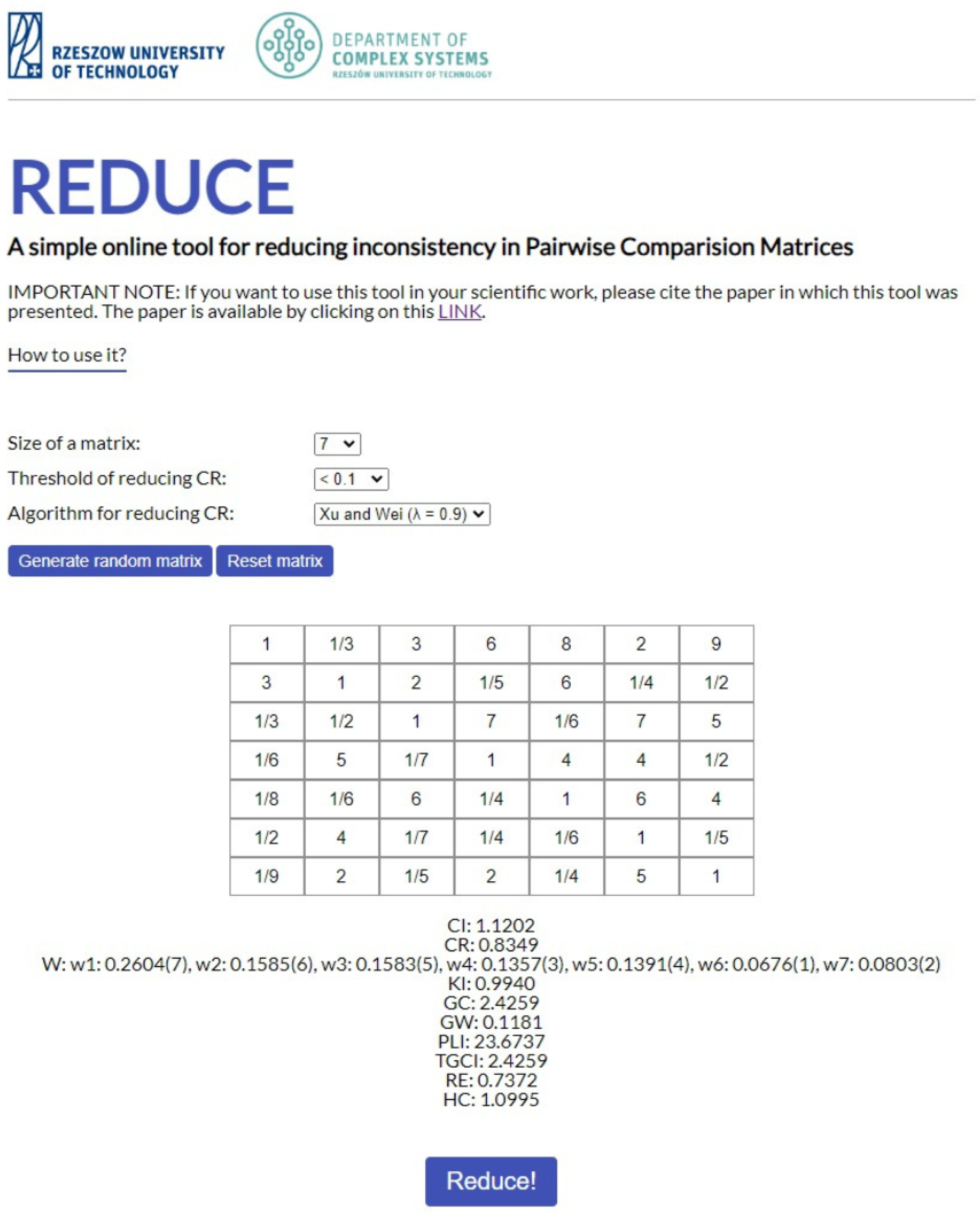
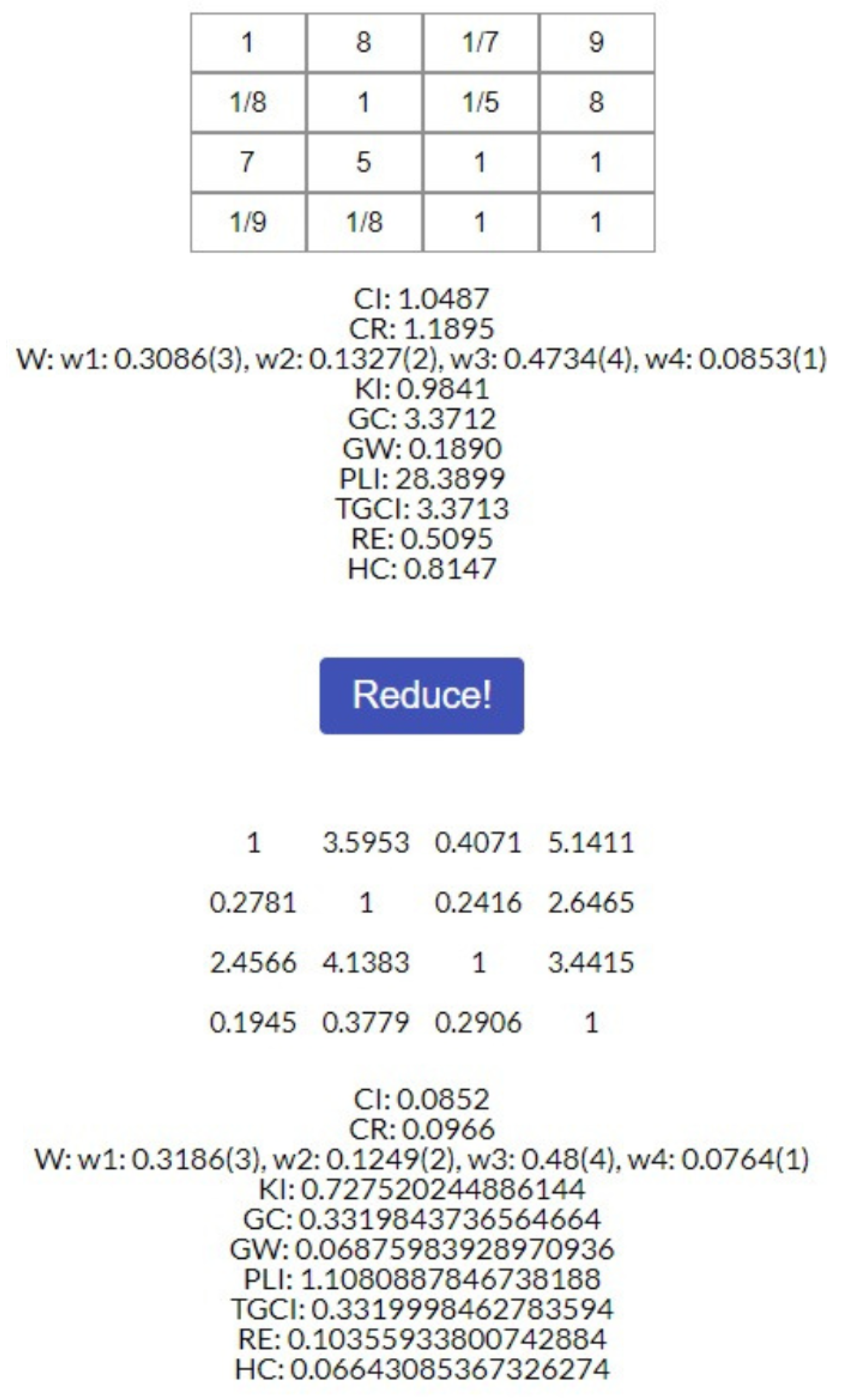

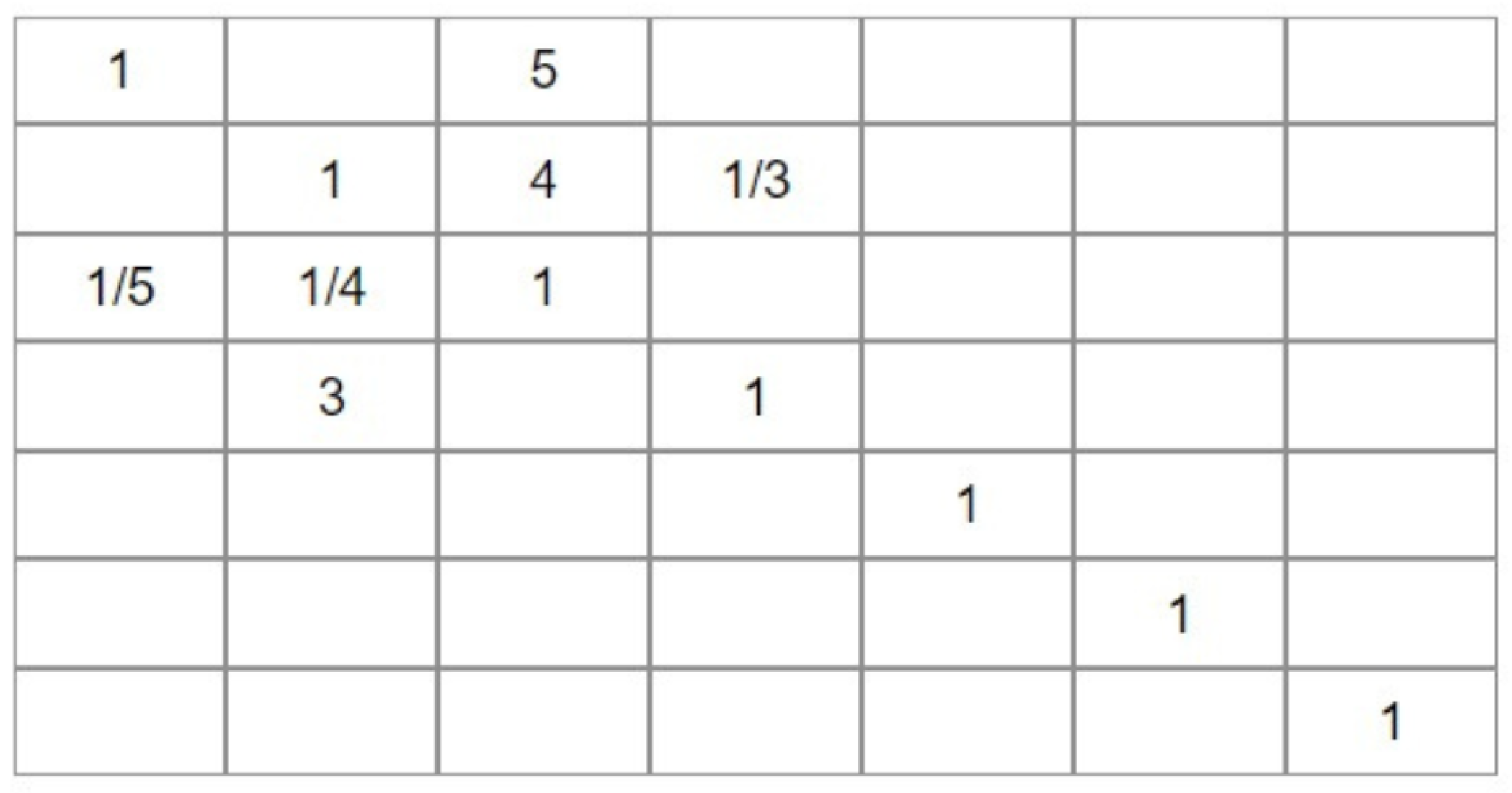

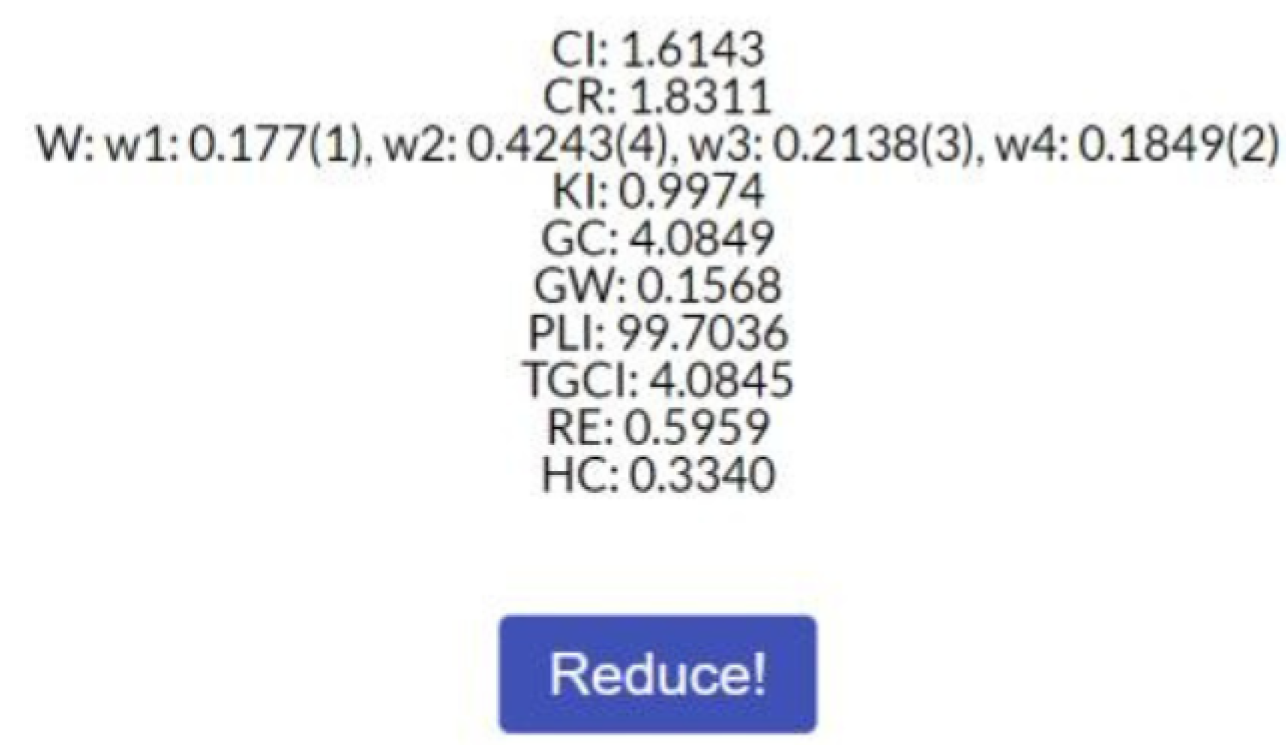
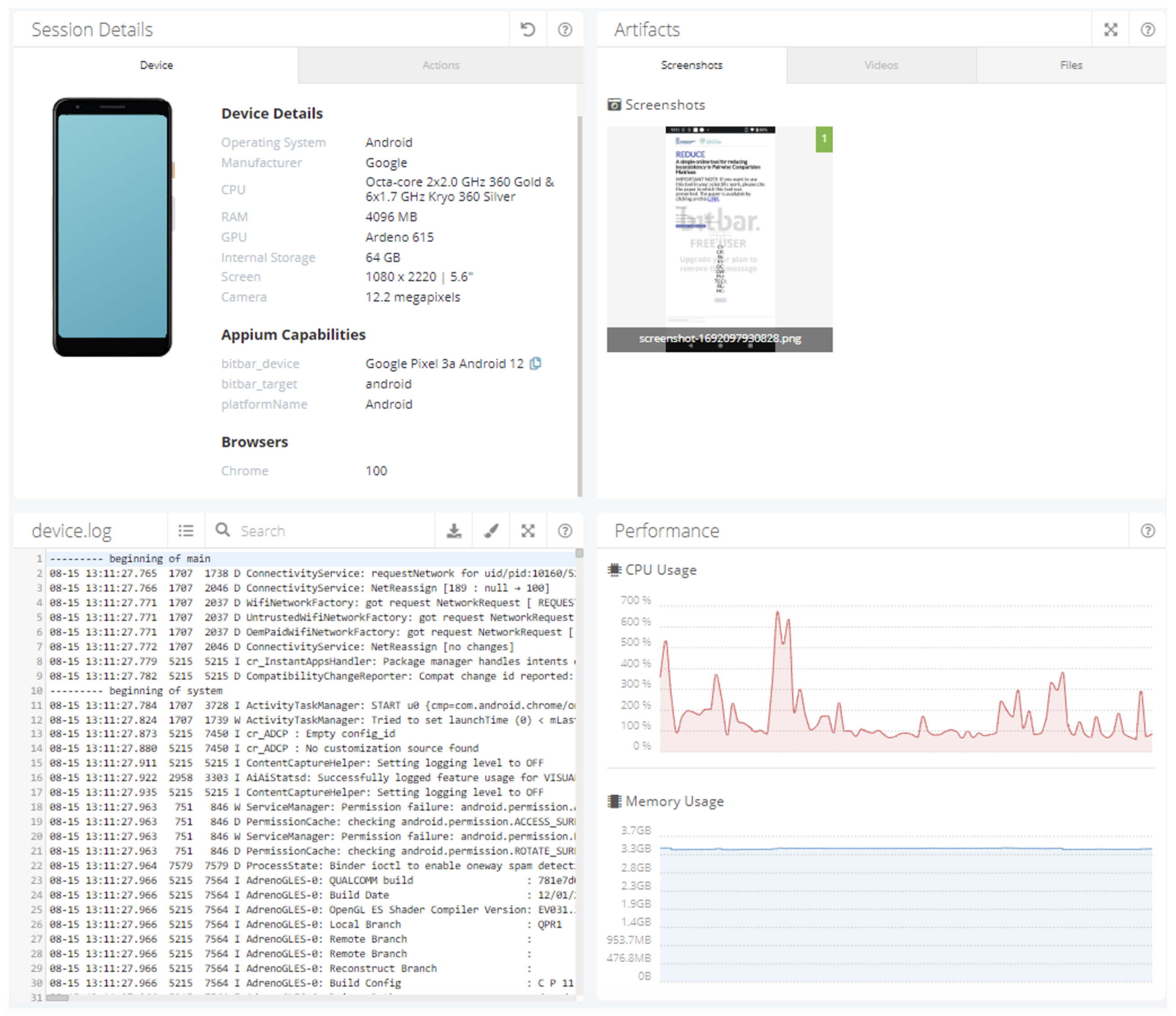
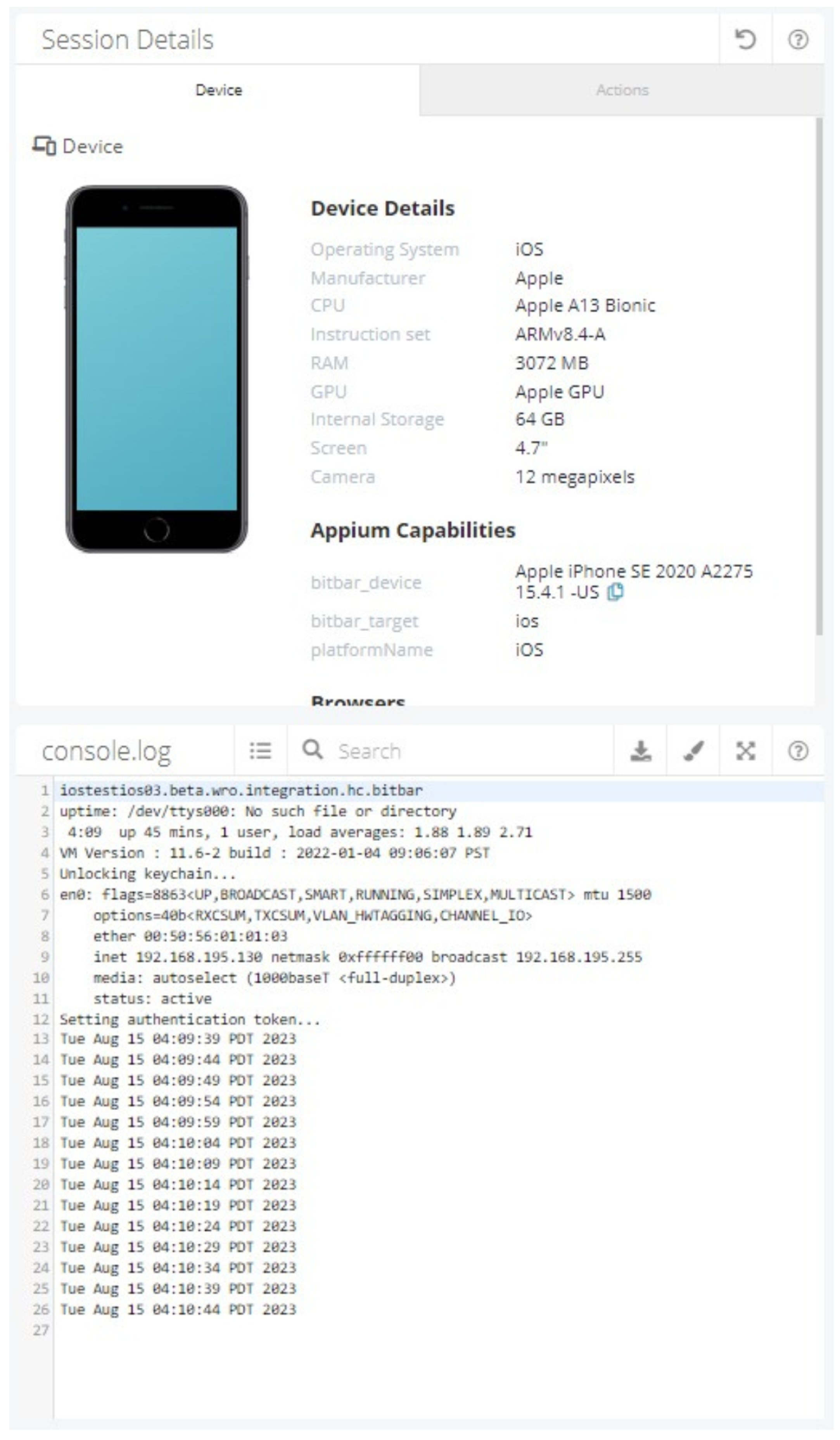
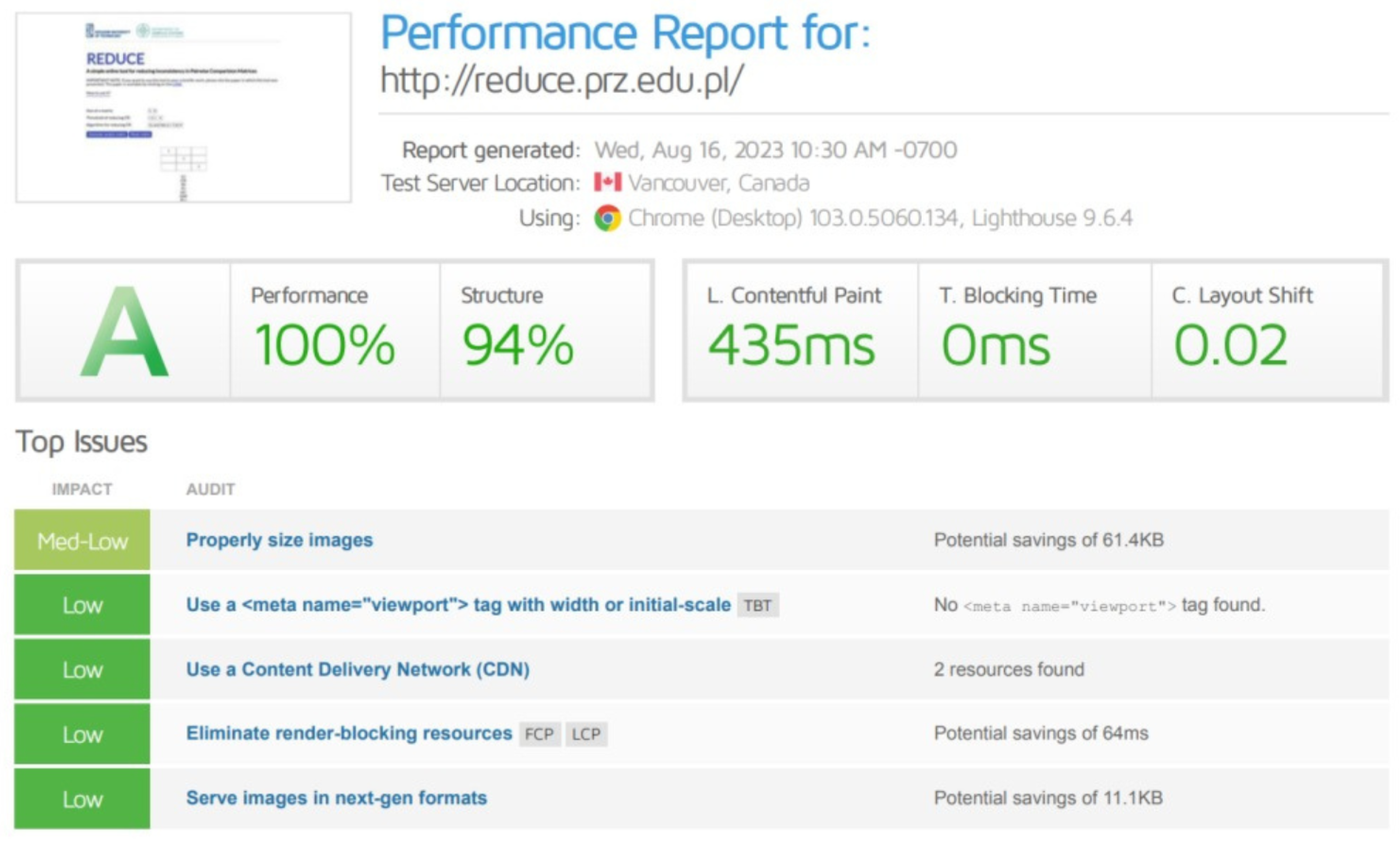

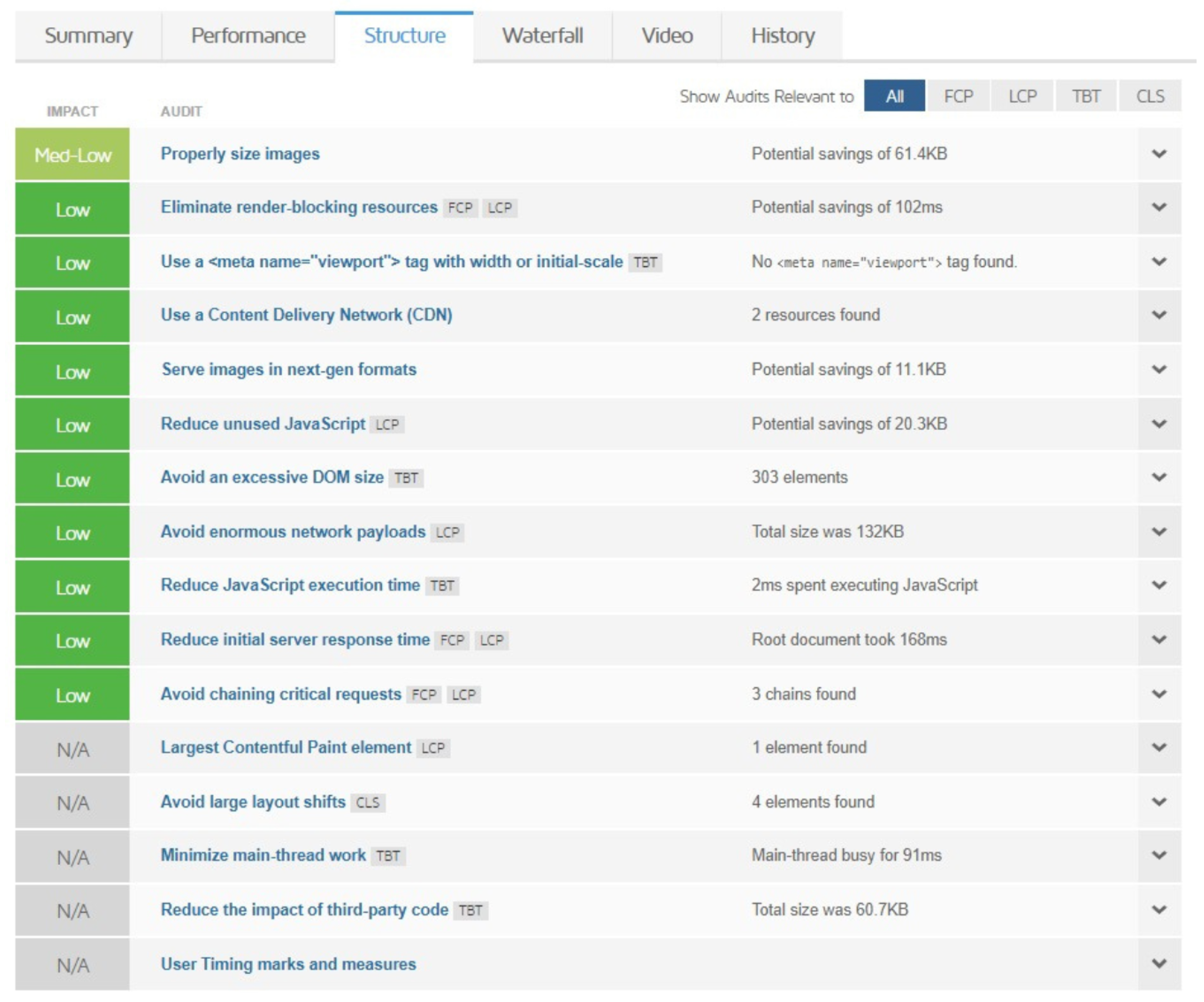

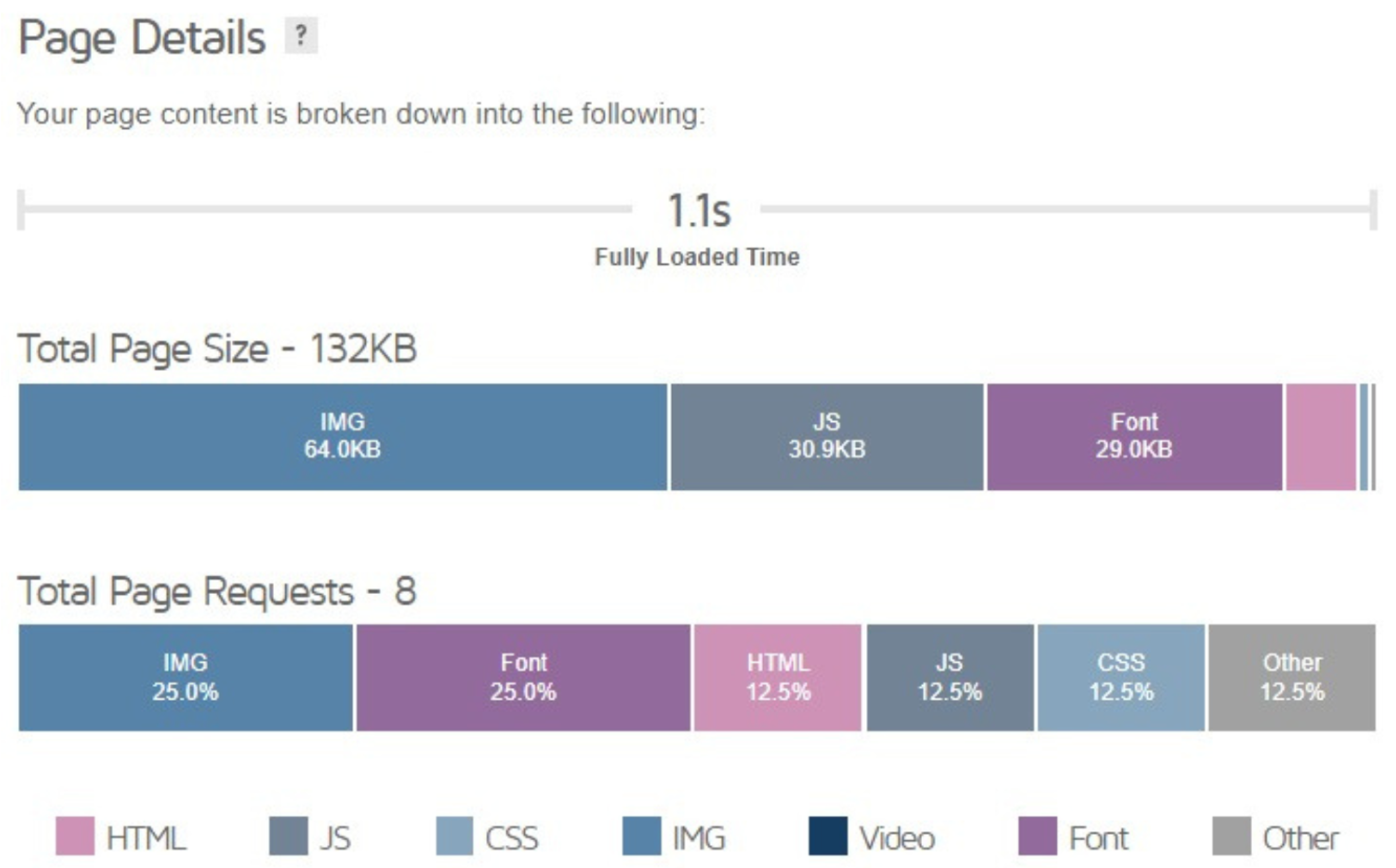
| Software | Key Features | Advantages | Disadvantages |
|---|---|---|---|
| REDUCE | Free online decision-making tool with support for inconsistency reduction in pairwise comparisons; offers algorithms for inconsistency reduction; supports AHP to some extent | Free to use; accessible online without installation; focuses on inconsistency reduction; suitable for small and medium enterprises; user-friendly interface | Limited features compared to commercial software; currently supports only two inconsistency reduction algorithms; lacks advanced AHP functionalities |
| Expert Choice [124] | Comprehensive decision-making software based on AHP; provides various tools for modeling, analyzing, and visualizing decisions | Well-established and trusted; rich feature set; advanced analysis and reporting capabilities; support and training available | Expensive; may be unaffordable for small and medium enterprises; requires installation; steep learning curve |
| Qvistorp [126] | Strategic planning and investment decision software; focuses on financial modeling and evaluation | Advanced financial modeling; supports complex investment decisions; provides strategic planning tools | High cost; may be overly complex for simple decision making; less focus on inconsistency reduction in pairwise comparisons |
| Paramount Decisions [127] | Web-based decision-making tool using choosing by advantages (CBA) methodology; facilitates collaborative decision making | User-friendly interface; promotes transparency and collaboration; accessible online; suitable for group decisions | Subscription-based; may lack advanced analytical features; less focus on pairwise comparisons and inconsistency reduction |
Disclaimer/Publisher’s Note: The statements, opinions and data contained in all publications are solely those of the individual author(s) and contributor(s) and not of MDPI and/or the editor(s). MDPI and/or the editor(s) disclaim responsibility for any injury to people or property resulting from any ideas, methods, instructions or products referred to in the content. |
© 2024 by the authors. Licensee MDPI, Basel, Switzerland. This article is an open access article distributed under the terms and conditions of the Creative Commons Attribution (CC BY) license (https://creativecommons.org/licenses/by/4.0/).
Share and Cite
Kuraś, P.; Strzałka, D.; Kowal, B.; Organiściak, P.; Demidowski, K.; Vanivska, V. REDUCE—A Tool Supporting Inconsistencies Reduction in the Decision-Making Process. Appl. Sci. 2024, 14, 11465. https://doi.org/10.3390/app142311465
Kuraś P, Strzałka D, Kowal B, Organiściak P, Demidowski K, Vanivska V. REDUCE—A Tool Supporting Inconsistencies Reduction in the Decision-Making Process. Applied Sciences. 2024; 14(23):11465. https://doi.org/10.3390/app142311465
Chicago/Turabian StyleKuraś, Paweł, Dominik Strzałka, Bartosz Kowal, Patryk Organiściak, Krzysztof Demidowski, and Veronika Vanivska. 2024. "REDUCE—A Tool Supporting Inconsistencies Reduction in the Decision-Making Process" Applied Sciences 14, no. 23: 11465. https://doi.org/10.3390/app142311465
APA StyleKuraś, P., Strzałka, D., Kowal, B., Organiściak, P., Demidowski, K., & Vanivska, V. (2024). REDUCE—A Tool Supporting Inconsistencies Reduction in the Decision-Making Process. Applied Sciences, 14(23), 11465. https://doi.org/10.3390/app142311465









